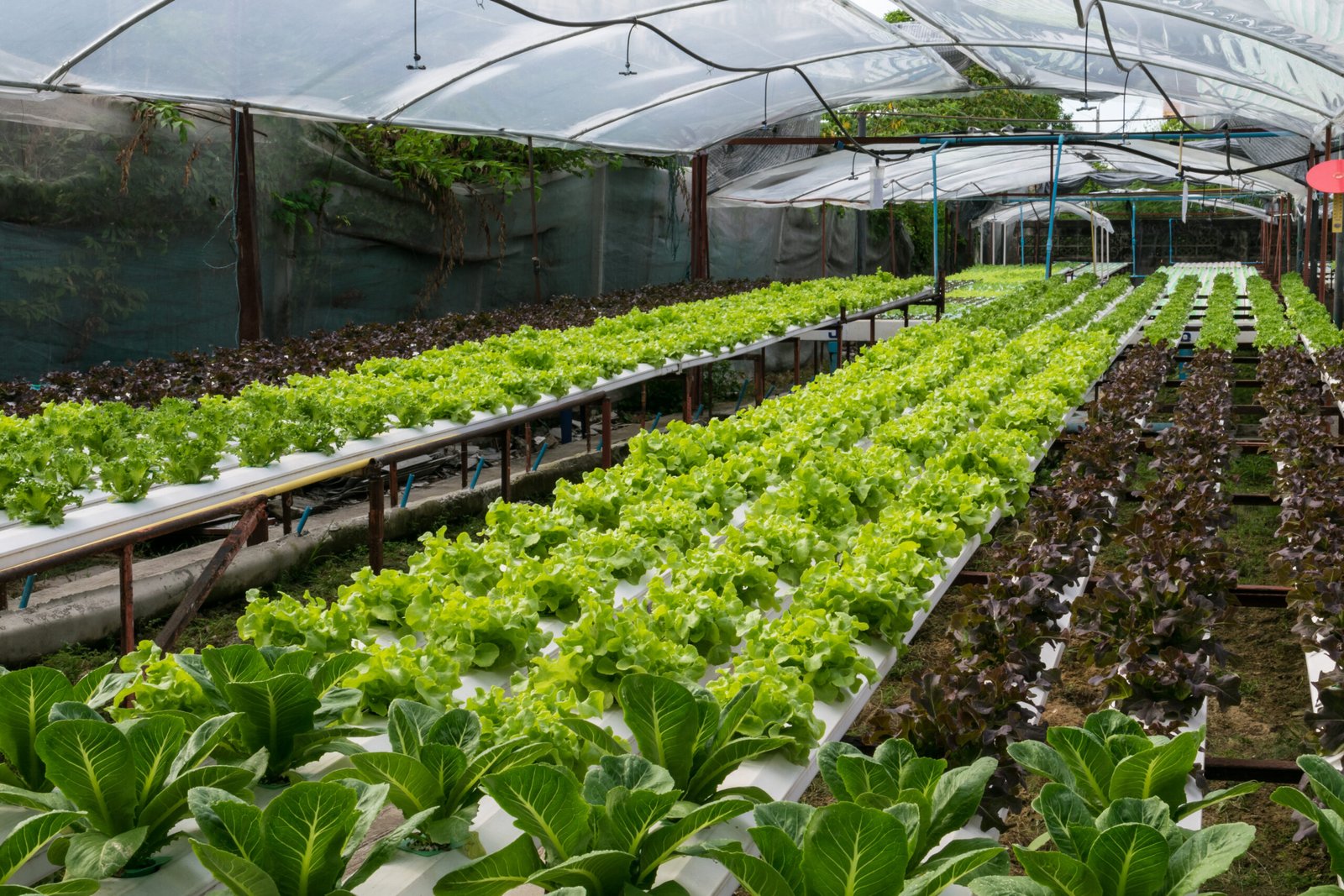⚫ Introduction :
Growing tomatoes in hydroponics/Soilless Culture can be a rewarding experience, yielding faster growth and higher yields compared to traditional soil farming. Here’s a comprehensive guide to help you successfully grow tomatoes using hydroponic/Soilless Culture systems.
1.Choose the Right Hydroponic System: Find Your Perfect Setup
There are several hydroponic/Soilless systems that are being used to grow Tomatoes:
⚫Deep Water Culture (DWC): Plants are suspended in nutrient-rich water, with roots submerged in the solution.
⚫Nutrient Film Technique (NFT): A thin film of nutrient solution flows over the roots.
⚫Ebb and Flow (Flood and Drain): Periodically floods the grow tray with nutrient solution, then drains it back into the reservoir.
⚫Drip System: Tomato Nutrient solution is dripped directly onto the base of each plant.
⚫Aeroponics: Roots are misted with nutrient solution in a closed environment.
As per my experience for tomatoes, the growbags of soilless culture based farming with drip systems are the best option to be used, due to their ability to support larger plants.
2. Select the Right Tomato Variety: Choose Wisely for Best Results Certain tomato varieties are better suited for hydroponic/Soilless Culture growth: Select the variety as per the availability in your region.
3. Prepare the Growing Medium: Support Your Tomatoes
Tomatoes need a stable growing medium to support their weight. Suitable mediums include:
⚫Coconut Coir: Provides good aeration and water retention.
⚫Rockwool: Excellent for seed starting and rooting.
⚫Perlite: Ensures good drainage and aeration.
⚫Clay Pellets: Ideal for supporting larger plants due to their weight and stability.
4. Germinate the Seeds: Start Strong Start by germinating the seeds in a seed starter:
⚫Soak Seeds: Soak the tomato seeds in water for a few hours.
⚫Plant Seeds: Place seeds in a seedling tray filled with a damp medium like Rockwool or coconut coir.
⚫Maintain Humidity: Keep the medium moist and cover with a plastic dome to maintain humidity at the time of sowing seeds.
⚫Provide Light: Ensure they receive 14–16 hours of light daily.
⚫Transplant: When seedlings are 15–25cm tall, transplant them into your hydroponic system.
5. Nutrient Solution: Feed for Success Tomatoes require a balanced nutrient solution with the following:
⚫Nitrogen (N): Essential for foliage growth.
⚫Phosphorus (P): Important for root and flower development.
⚫Potassium (K): Crucial for overall plant health and fruit development.
⚫Micronutrients: Including calcium, magnesium, iron, and others.
Maintain the nutrient solution at an Electrical Conductivity (EC) of 2.0–3.5 mS/cm and a PH between 5.5 and 6.5.
6. Light and Temperature: Create the Perfect Climate
Tomatoes need ample light and the right temperature conditions:
⚫Light: Provide 8–14 hours of light per day,
⚫Temperature: Maintain daytime temperatures between 70–75°F (21–24°C) and night time temperatures around 60–65°F (15–18°C). But now a days we have addedadvantage by getting access to hybrid seeds that are much capable to grow in any harsh conditions life too hot or too cold as well.
7. Pruning and Training: Maximize Your Yield
Tomato plants need regular pruning and training to maximize yield:
⚫Prune Suckers: Remove side shoots (suckers) that grow between the main stem andbranches to focus energy on fruit production.
⚫Support Plants: Use trellises, stakes, or cages to support the weight of the growingplants and fruits.
⚫Pollination: Encourage pollination by gently shaking the plants or using an electrictoothbrush to vibrate the flowers.
8. Monitor and Maintain: Keep a Watchful Eye Regular monitoring and maintenance are key to successful hydroponic tomato growth:
⚫Check pH and EC Levels: Test and adjust the pH and EC of the nutrient solutionregularly.
⚫Inspect Plants: Look for signs of nutrient deficiencies, pests, or diseases.
Change Nutrient Solution: Replace the nutrient solution as per the plant plant growth.
9. Harvesting: Enjoy Your Bounty
Tomatoes are typically ready to harvest in 60–85 days after transplanting, depending on thevariety:
⚫Check Ripeness: Harvest when tomatoes are fully colored and slightly firm to the touch.
⚫Pick Carefully: Use scissors or gently twist the fruit to avoid damaging the plant.
Conclusion: Hydroponic/Soilless Culture Tomatoes — A Bumper Crop Awaits! Growing tomatoes in hydroponics/Soilless Culture can be a highly productive and rewarding method, providing fresh, delicious tomatoes year-round. By choosing the right system, variety, and maintaining proper care, you can enjoy the benefits of hydroponic gardening with this popular and versatile fruit.
Happy growing !




Very interesting topic, thank you for posting.Money from blog
My Pleasure